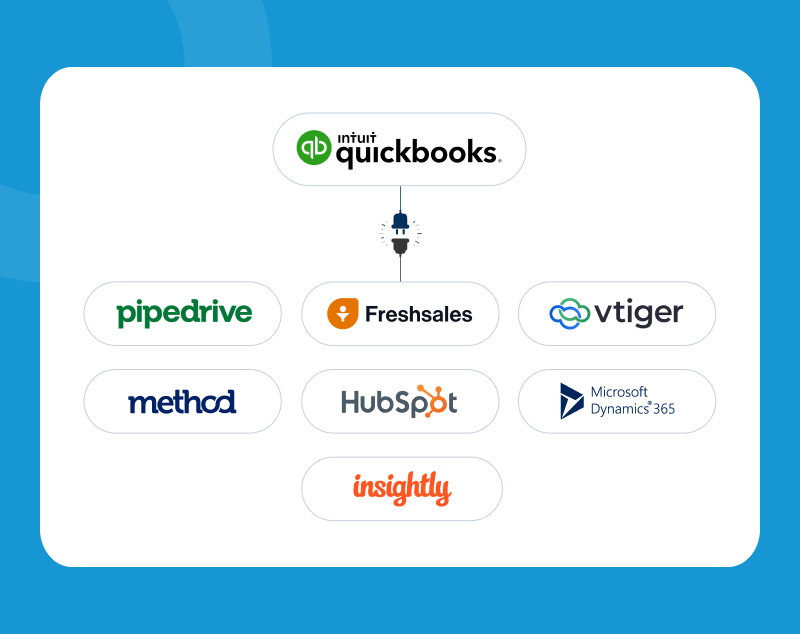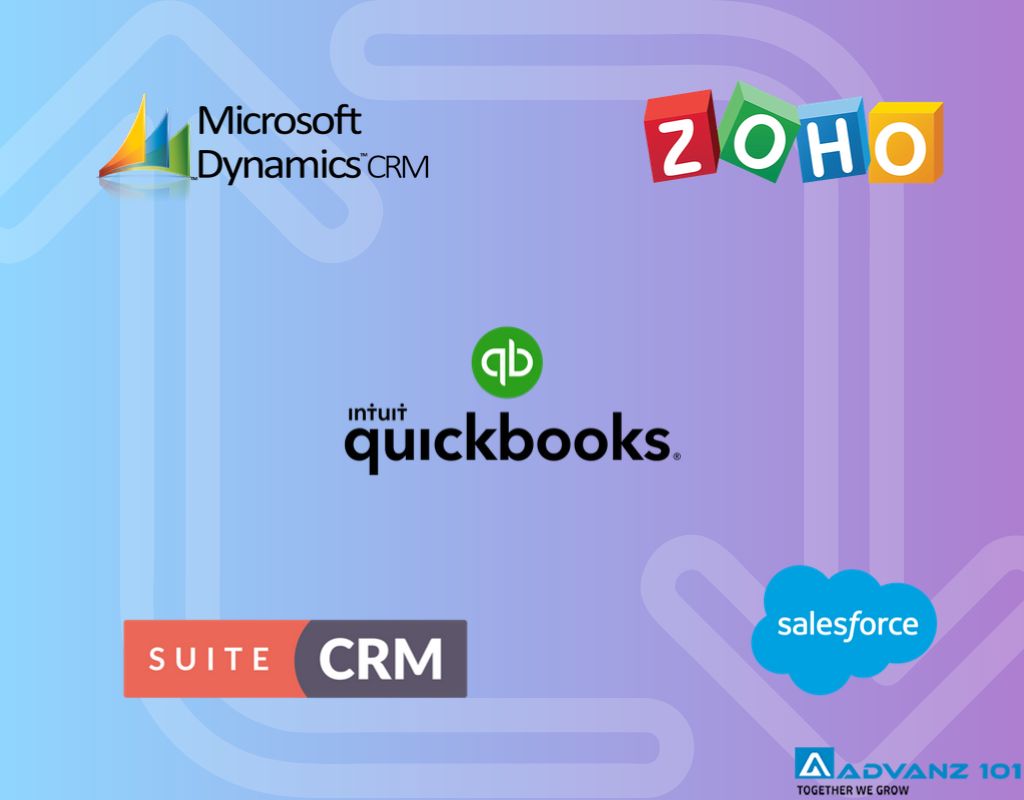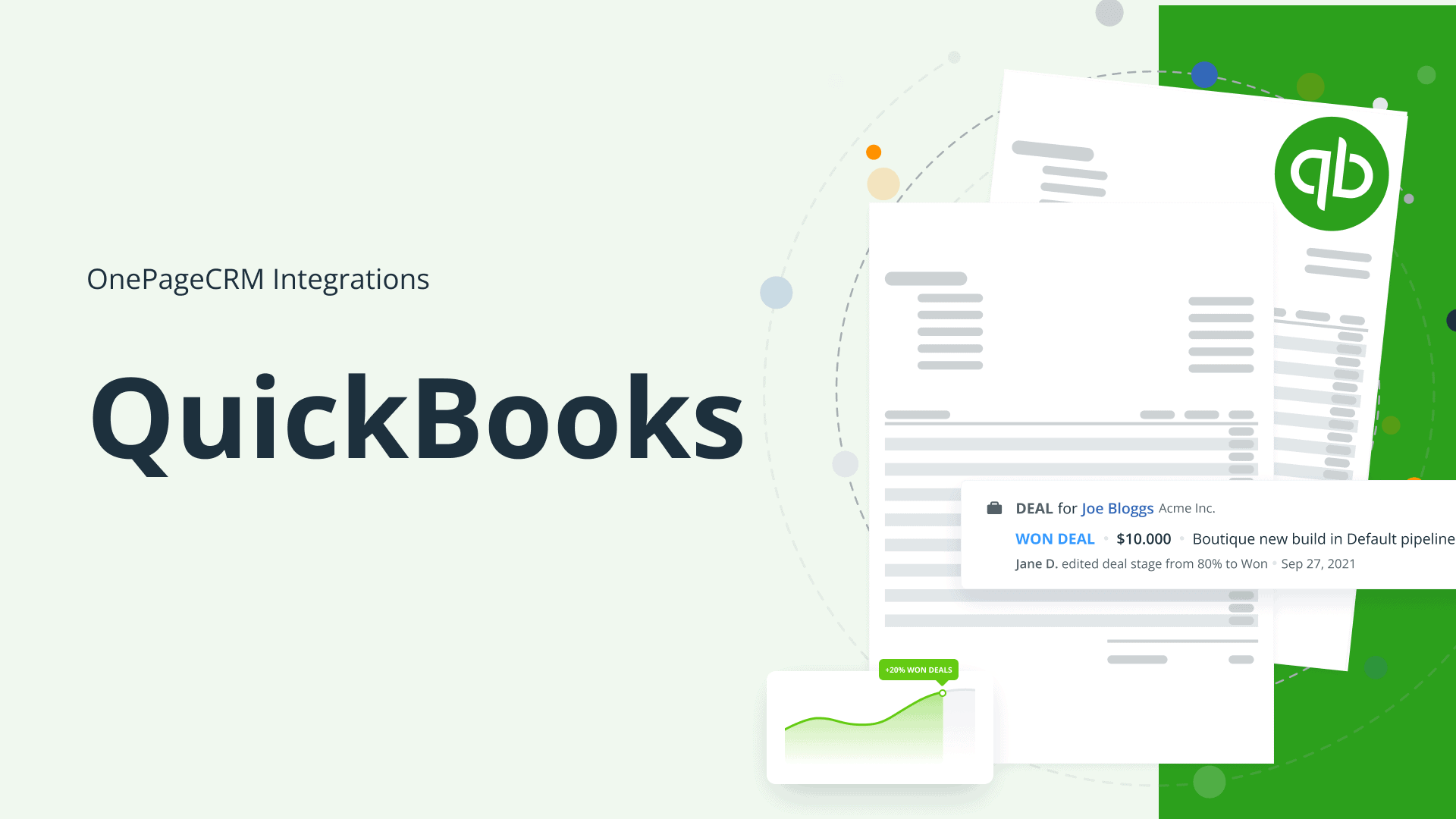QuickBooks and CRM, when combined, offer a powerful solution for businesses seeking to streamline operations and foster stronger customer relationships. This integration enables seamless data sharing, process automation, and enhanced decision-making, transforming business operations and driving growth.
Integrating QuickBooks, a leading financial management software, with a robust CRM system empowers businesses to manage their finances and customer interactions effectively. By eliminating manual data entry, automating workflows, and providing real-time insights, this integration optimizes business processes, improves customer satisfaction, and unlocks new opportunities for growth.
Integration of QuickBooks and CRM Systems
Integrating QuickBooks and CRM systems offers numerous advantages for businesses. By seamlessly connecting financial data with customer relationship management (CRM) capabilities, organizations can streamline operations, improve efficiency, and gain a comprehensive view of their business.
Benefits of Integration
- Enhanced Customer Management:Integration allows businesses to track customer interactions, preferences, and purchase history in a single platform, providing a holistic view of customer relationships.
- Improved Sales Processes:CRM data can be leveraged to identify sales opportunities, track customer touchpoints, and automate sales workflows, leading to increased productivity and revenue.
- Automated Accounting:Integration enables automatic syncing of financial transactions from QuickBooks to the CRM, eliminating manual data entry and reducing errors.
- Data-Driven Decision-Making:Integrated data provides businesses with real-time insights into customer behavior, sales performance, and financial health, facilitating informed decision-making.
Challenges of Integration
While integration offers significant benefits, it also presents certain challenges:
- Technical Complexity:Integrating different software systems can be a complex and time-consuming process, requiring technical expertise and careful planning.
- Data Compatibility:Ensuring data compatibility between QuickBooks and the CRM system is crucial to avoid data inconsistencies and errors.
li> User Adoption:Successful integration requires user buy-in and training to ensure that employees embrace the new system and utilize its capabilities effectively.
Benefits of Using QuickBooks and CRM Together
Integrating QuickBooks and CRM systems provides numerous advantages for businesses. By combining the financial management capabilities of QuickBooks with the customer relationship management features of a CRM, businesses can enhance their operations and improve efficiency.
Benefits of QuickBooks for Financial Management
- Accurate financial reporting:QuickBooks helps businesses track income, expenses, and assets, providing a clear picture of their financial performance.
- Simplified tax preparation:QuickBooks automates tax calculations and generates reports, making tax season less stressful and time-consuming.
- Improved cash flow management:QuickBooks provides insights into cash flow patterns, allowing businesses to make informed decisions about spending and investment.
Benefits of a CRM System for Customer Relationship Management
- Centralized customer data:CRMs store all customer information in one place, making it easy for teams to access and manage.
- Enhanced customer service:CRMs provide a comprehensive view of customer interactions, enabling businesses to provide personalized and timely support.
- Improved sales pipeline management:CRMs help businesses track leads, manage opportunities, and forecast sales, optimizing the sales process.
How Combining QuickBooks and CRM Enhances Business Operations
When QuickBooks and CRM systems are integrated, businesses can:
- Automate billing and invoicing:QuickBooks can automatically generate invoices based on data from the CRM, reducing manual errors and saving time.
- Track customer spending:By linking QuickBooks and CRM, businesses can track customer spending habits and identify opportunities for upselling and cross-selling.
- Improve financial forecasting:QuickBooks and CRM data can be used to create accurate financial forecasts, helping businesses plan for the future and make informed decisions.
Choosing the Right QuickBooks and CRM Combination

Choosing the right QuickBooks and CRM combination is crucial for businesses to optimize their operations and achieve success. Several factors should be considered when making this decision.
Factors to Consider
- Business Size and Industry:The size and industry of a business can influence the type of QuickBooks and CRM software that is most appropriate. Small businesses may need a simpler and more affordable solution, while larger businesses with complex operations may require a more robust and feature-rich system.
- Business Needs:The specific needs of a business should drive the choice of QuickBooks and CRM software. Consider the types of tasks that need to be automated, the level of integration required, and the reporting and analytics capabilities that are essential.
- Integration Capabilities:Seamless integration between QuickBooks and CRM is critical for efficient data flow and process automation. Ensure that the chosen software offers robust integration capabilities, allowing for easy data transfer and synchronization.
- Cost and Scalability:The cost of QuickBooks and CRM software should be considered within the budget of the business. Additionally, the scalability of the software should be assessed to ensure it can accommodate future growth and changing business needs.
Best Practices for Evaluation and Selection
- Research and Compare:Conduct thorough research on different QuickBooks and CRM software options, comparing their features, pricing, and customer reviews.
- Request Demos and Trial Versions:Request demos or trial versions of the software to gain hands-on experience and evaluate its functionality and usability.
- Consult with Experts:Seek guidance from industry experts, consultants, or other businesses that have successfully implemented QuickBooks and CRM combinations.
- Consider Implementation Costs:Factor in the costs associated with implementation, including training, data migration, and ongoing support.
Implementation and Configuration of QuickBooks and CRM Integration
Implementing and configuring QuickBooks and CRM integration involves several steps to ensure a seamless and effective connection between the two systems.
Data Mapping
Data mapping is crucial to establish a consistent flow of information between QuickBooks and CRM. It involves matching fields from both systems to ensure data is transferred accurately. Determine the specific data points that need to be synchronized, such as customer information, invoices, and payments.
Security Settings
Configure security settings to control user access and data permissions. Establish user roles and assign appropriate levels of access to ensure only authorized users can view or modify data. Implement encryption measures to protect sensitive financial and customer information during data transfer.
User Permissions, Quickbooks and crm
Define user permissions to specify which users have access to integrated data and functionalities. Grant permissions based on job responsibilities and ensure users have the necessary privileges to perform their tasks effectively.
Common Integration Issues
Data duplication
Verify data mapping to avoid duplicate records being created in either system.
Synchronization errors
Monitor integration logs and check network connectivity to identify and resolve any synchronization issues.
Performance issues
Optimize data transfer processes to avoid performance bottlenecks and ensure smooth data flow.
Troubleshooting Tips
- Review integration logs for error messages and troubleshoot accordingly.
- Test data transfers regularly to ensure accuracy and identify any potential issues.
- Contact the software provider or a certified integrator for assistance with complex integration challenges.
Best Practices for Managing QuickBooks and CRM Data

Maintaining accurate and consistent data across QuickBooks and CRM systems is crucial for efficient business operations. Here are some best practices to follow:
Data Synchronization Techniques
- Establish a regular synchronization schedule to ensure that data is updated in both systems promptly.
- Use automated synchronization tools or APIs to streamline the process and minimize errors.
- Monitor synchronization logs to identify and resolve any potential issues.
Data Quality Management Strategies
Data quality is essential for effective data management:
- Implement data validation rules to ensure that only accurate and complete data is entered into the systems.
- Regularly review and cleanse data to remove duplicates, inconsistencies, and outdated information.
- Establish clear data ownership and accountability to ensure that data is managed effectively.
Preventing Data Duplication and Errors
Preventing data duplication and errors is crucial for maintaining data integrity:
- Use unique identifiers to ensure that each record is distinct in both systems.
- Enforce data integrity constraints to prevent invalid data from being entered.
- Regularly reconcile data between the systems to identify and resolve any discrepancies.
Using QuickBooks and CRM for Business Analysis
Leveraging QuickBooks and CRM data for business analysis and reporting provides valuable insights into the financial and operational performance of your organization. By integrating these two systems, you can gain a comprehensive view of your business and make informed decisions to improve profitability.
Key Performance Indicators (KPIs) and Metrics
KPIs are quantifiable measurements that track the progress and success of your business. Some common KPIs that can be tracked using QuickBooks and CRM data include:
- Revenue: Total sales generated over a specific period.
- Profitability: Net income or profit margin.
- Customer acquisition cost: Cost of acquiring new customers.
- Customer lifetime value: Total revenue generated from a customer over their lifetime.
- Sales conversion rate: Percentage of leads that are converted into customers.
Dashboards and Reporting Tools
Dashboards and reporting tools provide a visual representation of your business data, making it easy to track KPIs and identify trends. These tools allow you to customize reports and create personalized dashboards that display the most relevant information for your business.
By using dashboards and reporting tools, you can:
- Monitor your financial performance in real-time.
- Identify areas for improvement.
- Make data-driven decisions.
- Improve communication and collaboration within your team.
Case Studies of Successful QuickBooks and CRM Implementations

Integrating QuickBooks and CRM systems has enabled numerous businesses to streamline their operations, enhance customer relationships, and drive growth. Here are some notable case studies:
XYZ Company
XYZ Company, a leading manufacturer of industrial equipment, faced challenges in managing customer data and streamlining its sales processes. By integrating QuickBooks with Salesforce CRM, they gained a comprehensive view of customer interactions, automated sales processes, and improved communication between sales and accounting teams.
This integration resulted in a 20% increase in sales revenue and a 15% reduction in operating costs.
ABC Corporation
ABC Corporation, a provider of professional services, struggled to track client information and manage billing efficiently. After implementing QuickBooks Online and HubSpot CRM, they gained the ability to centralize client data, automate billing processes, and improve communication with clients. This integration led to a 30% increase in client satisfaction and a 10% increase in revenue.
Lessons Learned and Best Practices
- Identify clear business objectives and goals before integrating QuickBooks and CRM systems.
- Choose a QuickBooks and CRM combination that aligns with your business needs and industry.
- Involve key stakeholders in the implementation process to ensure buy-in and smooth adoption.
- Establish clear data mapping and integration rules to ensure data accuracy and consistency.
- Monitor and evaluate the integration regularly to identify areas for improvement and optimize performance.
Future Trends in QuickBooks and CRM Integration

The integration of QuickBooks and CRM systems is constantly evolving, driven by advancements in technology and changing business needs. Here are some emerging trends that will shape the future of QuickBooks and CRM integration:
Cloud Computing:Cloud-based QuickBooks and CRM systems offer increased accessibility, flexibility, and cost-effectiveness. Businesses can access their data from anywhere with an internet connection, enabling real-time collaboration and data sharing.
Artificial Intelligence (AI)
AI is revolutionizing QuickBooks and CRM integration by automating tasks, providing insights, and improving decision-making. AI-powered systems can automate data entry, reconcile transactions, and generate reports, freeing up valuable time for businesses.
Automation
Automation is another key trend in QuickBooks and CRM integration. Automated workflows can streamline processes, reduce errors, and improve efficiency. Businesses can automate tasks such as sending invoices, tracking expenses, and generating sales leads.
Implications for Businesses:These trends have significant implications for businesses. By embracing these advancements, businesses can:
- Increase productivity and efficiency
- Gain real-time insights into their data
- Improve customer service
- Make better decisions
- Stay competitive in the market
Final Review: Quickbooks And Crm
In conclusion, the integration of QuickBooks and CRM is a strategic investment for businesses seeking to enhance their operations, strengthen customer relationships, and gain a competitive edge. By leveraging the combined capabilities of these powerful tools, businesses can streamline processes, improve data accuracy, and make informed decisions that drive success.
Detailed FAQs
What are the key benefits of integrating QuickBooks and CRM?
Integrating QuickBooks and CRM streamlines financial management, enhances customer relationship management, automates workflows, and provides real-time insights for better decision-making.
How do I choose the right QuickBooks and CRM combination for my business?
Consider your specific business needs, the size of your organization, and the features and functionalities offered by different QuickBooks and CRM software. Evaluate and compare options carefully before making a decision.
What are some best practices for managing QuickBooks and CRM data effectively?
Establish clear data entry guidelines, implement regular data backups, and utilize data synchronization tools to ensure data accuracy and consistency across both systems.
